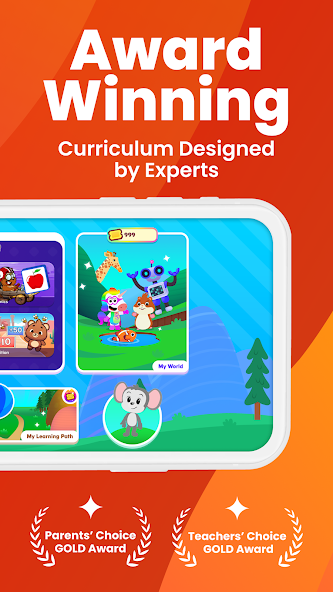Today’s parents are concerned that their children are spending too much time on the screen or not learning much while playing. Though books and classrooms are significant, toddlers and young children do best when play is combined with learning. But how do you find the right balance between play and skill-building? The major finding the optimal combination of toddler games, children’s games, and reading apps for children to promote early growth without sacrificing fun.

1. Why Play-Based Learning Works
Play is fun, but it is also the way children learn the world. Interactive and imaginative play, as reported by child psychologists, boosts a child’s cognitive, social, and emotional development. Particularly for toddlers, who are curious about everything, games offer a low-stress environment to test, observe, and learn.
Whether it’s a color-matching puzzle or pretend kitchen play, well-designed games for toddlers improve fine motor skills, hand-eye coordination, language development, and decision-making abilities — all while keeping them entertained.
2. Types of Games That Help Kids Grow
Not all games are created equal. As a parent, it’s important to differentiate between simple screen time and purposeful play. The best toddler games combine problem-solving, creativity, and age-appropriate learning.
Here are some of the types of kids games that are fun and educational:
- Puzzle games: Enhance logic and spatial perception.
- Shape & color games: Educate early recognition and classification.
- Story-based games: Inspire imagination and enhance listening.
- Music and rhythm games: Enhance memory, pattern recognition, and motor functions.
Select games that are ad-free and tailored for toddlers — they provide secure, distraction-free learning environments.
3. Reading Apps: A Breakthrough in Language Skills
Though games create a lot of abilities, reading remains the foundation of language and understanding. However, making reading fun for a toddler is a challenge. This is where kids’ reading apps come into their own.
Several companies’ interactive reading apps provide:
- Voiceover and visuals to facilitate word-image connection.
- Tap-to-read functions to create vocabulary.
- Little games within stories to keep children hooked.
The best part about reading apps is that they are created specifically for short attention spans with the development of a love for reading. These apps also enable parents to monitor progress and establish goals, making screen time meaningful.
4. Screen Time: How Much is Too Much?
They advise babies and toddlers to spend no more than an hour in front of a screen each day — and that should be parent-approved, high-quality content. Rather than cutting out devices entirely, hone in on creating worthwhile content. If used judiciously, games for toddlers and reading apps for children can be great learning opportunities.
Integrate hands-on play with digital play such as drawing, building blocks, or playing outside. The idea is to offer an all-around play-and-learn setting.
Conclusion:
Learning does not always need to appear solemn. In fact, for children who are growing up, play is the most natural and effective means of learning new things. By incorporating expertly selected toddler games, enhancing kids games, and interactive reading apps for kids, you can help your child grow up without stress and pressure.
Let play be their teacher — and let every moment be filled with curiosity, learning, and joy.